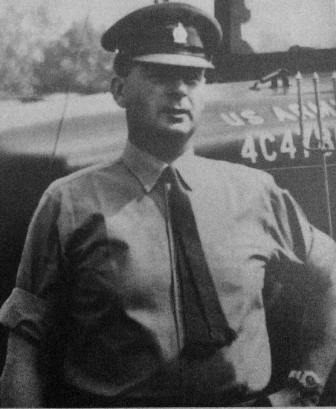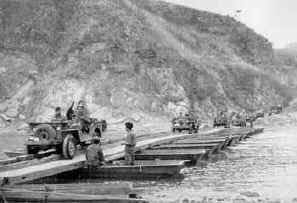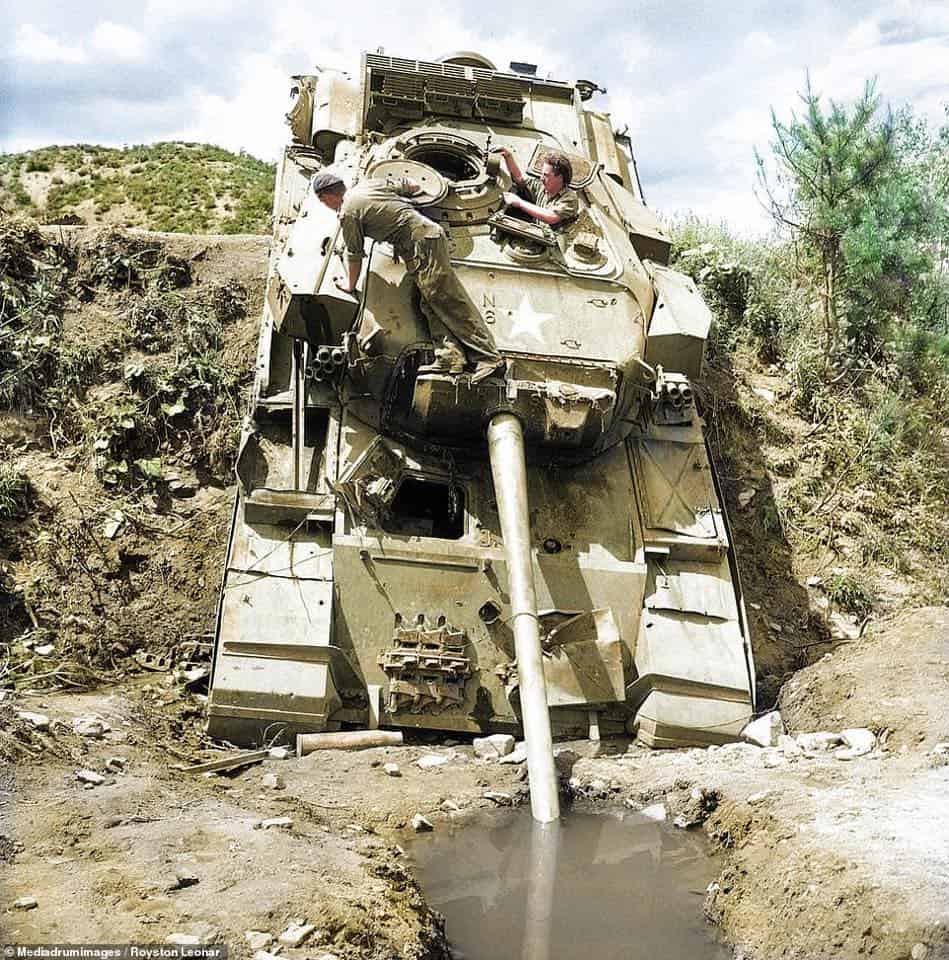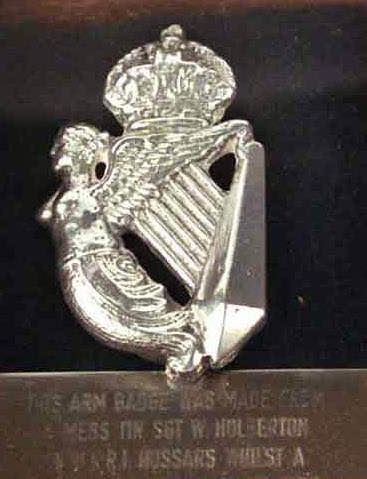Whatever profession Bill had chosen, he, with his ability and determination, would have achieved success.

Luckily for the Regiment, he served so loyally and well for many years that his chosen profession was soldiering.
Bill an Essex man, enlisted in April 1947 into the RAC, after basic and crewman training he was posted to the 8th Hussars who were in Oct 1947 serving as the army of occupation in Lingen Germany. Bill returned with the Regiment to Leicester in 1948.
Later that year he would qualify as a Comet Tank Driving & Maintenance instructor in Bovington and would be posted for the first and only time away from the Regiment to the Yorkshire Hussars as a Lance Corporal and subsequently to Corporal in 1949.
In 1950 he returned to Tidworth and as a regular soldier found promotion again at a very young age to Sergeant in the newly reformed ‘C’ Squadron. Bill converted to the new Centurion tank and by July 1950 the Regiment was on a war footing for Korea.
Bill was selected as part of the Regiments inoculation party and emplaned for Japan in September 1950. On 3 October he reached Pusan and was attached to a US tank Battalion to gain as much knowledge and theatre experience prior to the arrival of the Regiment in early November.
Reunited with his Troop and Squadron and now fully operational and on the move. From then on, they were on their tracks and moved onto, among other places, Yongdungpo, a frozen island in the River Han, Pyontaek, Songhwon-Ni and Pabalmak. The latter was C Squadron supported the Glosters in the successful attack on Hills 327 and 181.
22 April 1951 ‘C’ Squadron relieved ‘B’ Squadron on the Imjin, the Battle would start that night. During the 4 days of battle, Bill would be part of Ormrod Force. The 22, 23 and 24 would see the half Squadron Group support the Fusiliers and Glosters extricating their Companies that had been forced from their defensive positions and supporting the Brigades counter attacks.

By the 25 April their primary mission was to keep route 11 open to allow the infantry to withdraw, a task that they carried out successfully; had they not done so the fate of the Fusiliers and Glosters would have been much worse.
Bill was Commanding the lead tank furthest north up the valley and was the last to attempt to withdraw. In trying to exit north he immediately encountered a massive ambush. His only hope of extradition was to smoke it off and burst his way through.
Unfortunately, the smoke from his smoke grenades obscured a deep dyke which his driver went straight over and into. His main armament spiked in the ground and rendered his tank immobile.

Bill jumped out of the turret to try to get to the driver’s cab but the Chinese were swarming all over it. Bill, his operator and gunner were pistol-whipped, butt-stroked and taken prisoner.
The Chinese were smarting from their wounds and heavy casualties that Bill’s crew had inflicted on them and if not for the arrival of a Political Officer, would have been executed.
Trooper Walton the driver was not so lucky, his body would be found months later in a shallow grave close to the tank when the UN forces retook the area.
Bill and the remainder of his crew were hustled along the valley and joined many other members of the Brigade in the same predicament. That night the majority would be marched North to POW camps, but due to the injuries, Bill had sustained he was held back. The USAF put airstrikes on all the 8th Hussars Centurions that didn’t make it out, at that stage, they were still top secret and could not fall into enemy hands.
Bill remained in a hut without food or water for 3 days before he was marched north. Raw potatoes would be his only meal when and where he could find them, he was only dressed in a vest and shorts and on crossing the river he fell in, a Chinese Sgt pulled him out, probably saving his life and also taking pity on Bill gave him his overcoat.
Marching only by night Bill and the trail of POWs finally reached the far north and were incarcerated in the harsh North Korean POW camps. Experiencing a lack of food, medical care, beatings, humiliation, solitary confinement and attempts to be indoctrinated into the ways of Chairman Mao (“in one ear, out the other”, Bill would say).
For a number of weeks he was in the notorious Pak’s Palace, where he would be interrogated by Political Officers trying to gain any information on the Centurion, Bill would maintain that he was only a supply Sergeant and knew nothing about tanks.
During his time Bill would fashion a mess tin into an identical replica of the Angel Harp badge worn by all SNCOs of the Regiment (now property of the QRH Sgts Mess).

In August 1953, Bill would be released as part of the prisoner exchange and after leave and a short time at the RAC Depot, he returned to the Regiment in Luneburg in January 1954.
Bill would go on to serve as an 8th Hussar and into the Queen’s Royal Irish Hussars as an SQMS on its formation in 1958. He would become ‘B’ Squadron SSM in 1961 and would serve with the Regiment in Aden, Ipoh, Penang, Borneo and Wolfenbüttel. In 1963 Bill would be appointed Regimental Sergeant Major, a post he would hold for five years.
He would lead the bearer party of laying to rest Sir Winston Churchill in January 1965 and would bring the Regiment back to England in 1967. In August 1968 Bill would retire from service.
Bill passed away on the 30th of April 2002.


